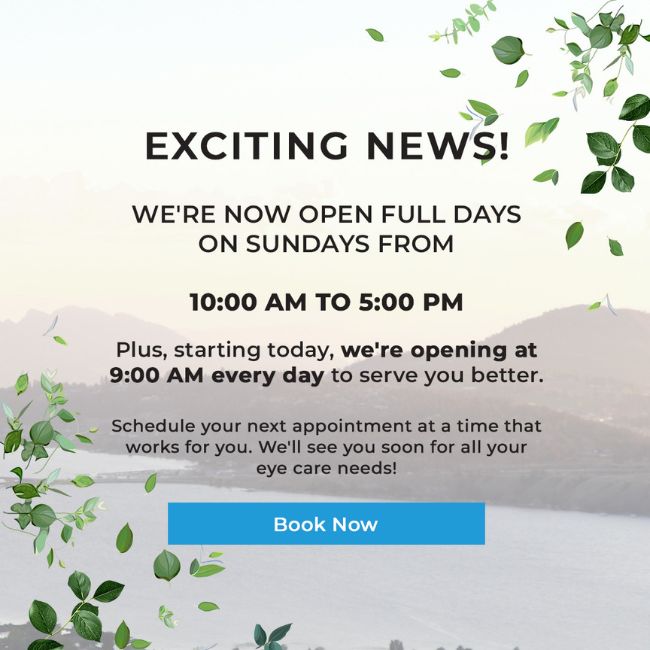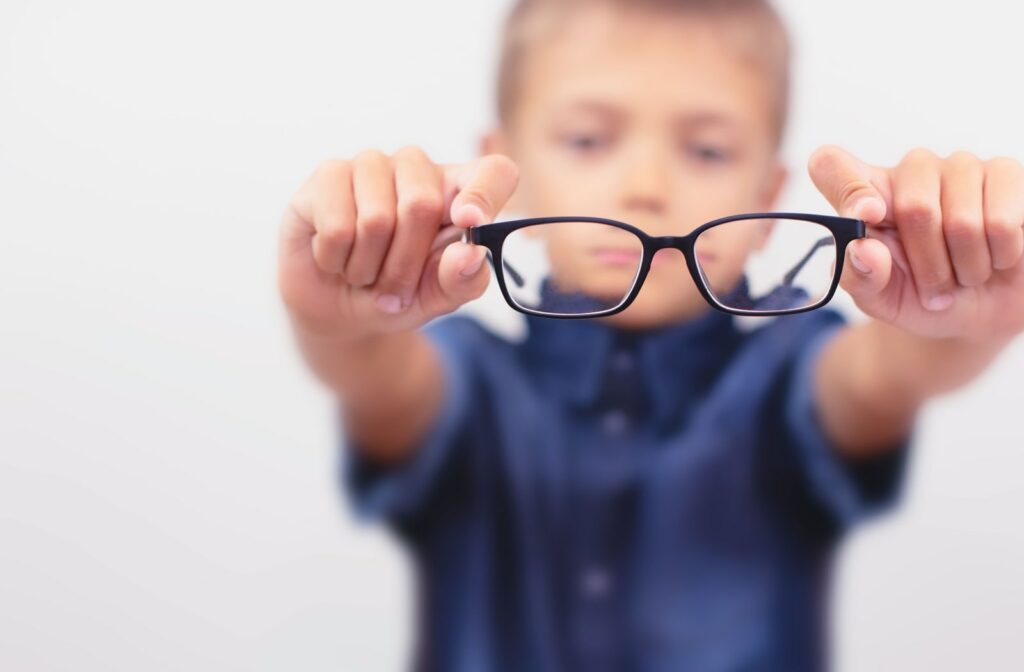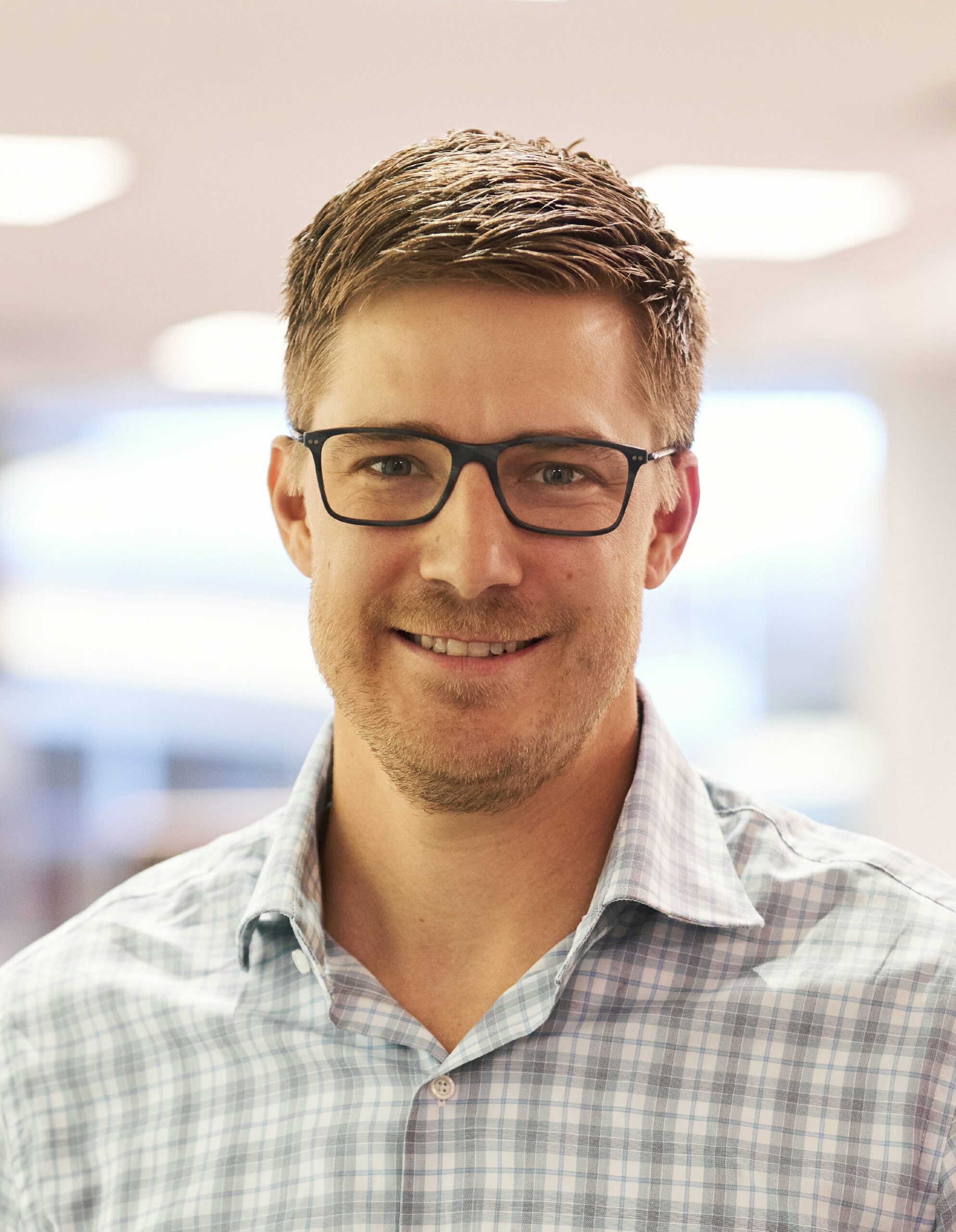Myopia, also known as nearsightedness, affects many people. The Canadian Association of Optometrists (CAO) estimates that approximately 30% of the Canadian population has some form of myopia. Fortunately, it’s usually easy to correct and sometimes can even be managed with natural methods. The first step is for an eye doctor to diagnose the severity by calculating one’s prescription for glasses or contact lenses. This determines how a person’s myopia can be managed.
An optometrist can diagnose myopia as part of a comprehensive eye exam. Eye exams are recommended for kids as early as six months old, again around age two, at age five, and then yearly once they start grade school. Approximately 1 in 4 kids has a vision problem that can affect their ability to see and learn. Kid’s exams are tailored with tests specific to their age that can truly be a pleasant experience.
What is Myopia?
Myopia occurs when light doesn’t focus properly inside the eye, causing blurry distance vision. When you are nearsighted, you can usually see close objects, but they get blurry as they get further away. As light enters your eye, it’s refracted incorrectly, and the image is focused on in the wrong place, causing the blurry distortion of objects at a distance. Increasing myopia means that the shape of the eye is getting progressively longer, increasing the degree of nearsightedness.
Through an eye exam, an optometrist will be able to diagnose this condition quickly. However, it also presents itself. Here are several symptoms that may suggest you have myopia:
- Objects are blurry at a distance
- Squinting or partially closing your eyelids for clear vision
- Excessive eye strain leading to headaches
- Difficulty seeing at night
Myopia in Children
According to the National Library of Medicine, approximately 50% of school-age children have some degree of myopia, and over half of those remain uncorrected. There are some signs of myopia you can watch out for that seem to be persistent among kids:
- Constant squinting
- Sitting close to the TV
- Wanting to be close to the front of the class
- Excessive blinking
- Frequent eye rubbing
- Seemingly unaware of objects at a distance
Is Myopia an Emergency?
Typically, myopia is not a medical emergency. However, in rare cases, complications from myopia could arise.
If you have these symptoms, call your eye doctor as soon as possible:
- Light flashes in eyes (one or both of them)
- Shadows in your visual field
- Sudden onset of an excessive amount of floaters in your vision
Why Control Myopia?
What we currently know is that myopia increases the risk of complicated ocular disease as people age. The higher the severity of myopia, the greater the risk for problems such as retinal detachment, glaucoma, age-related macular degeneration, and cataracts. These conditions all have the potential to cause severe vision loss and in some cases, blindness.
Almost every case of childhood myopia will progress as a child grows. The younger the child is when it starts, the faster they typically progress, and the more dependent they will be on vision correction throughout their life. It’s also important to consider that higher amounts of myopia are more difficult to treat with LASIK correction in adulthood.
How to Control Myopia
With the increasing prevalence of myopia impacting our youth, controlling myopia is becoming more and more popular. Myopia control options include different types of glasses, contact lenses, and prescription eye drops.
- Glasses: Traditional glasses can treat nearsightedness, making distance vision clear, however, they do not prevent myopia from progressing. Some kids have been prescribed bifocal lenses in the past to reduce the visual demand for close-oriented tasks like reading and using screens (tablets, phones, computers). Some newer lens designs for myopia control are starting to emerge on the market, but availability in Canada is still limited.
- Soft Multifocal Contact Lenses: These are specially-designed contact lenses that are clinically proven to reduce the rate of progression of myopia in children by up to 59%. They are single-use disposable contacts that are worn during the day instead of glasses.
- Ortho-Keratology (Ortho-K) Contact Lenses: These are specially-designed custom contact lenses that are worn overnight while a child sleeps. They gently reshape the cornea resulting in clear 20/20 vision by morning. During the daytime, no glasses or contacts are needed, therefore providing visual freedom similar to LASIK but without any surgery or permanent changes.
- Low-dose Atropine Therapy: A prescription eye drop that is used once daily to reduce the progression of myopia. Traditional glasses and/or contact lenses are still necessary to be worn during the daytime. In some cases, bifocal or progressive lenses are needed.
Natural Methods
Research shows that children with myopia who spend more time indoors are at a higher risk of progression compared to kids who spend time outdoors. This likely has to do with the smaller-proximity environments, increase in prolonged near-oriented visual tasks, and exposure to unhealthy artificial lighting (as opposed to full-spectrum natural daylight). If your kids enjoy indoor activities, that’s OK, just make sure to have a healthy balance of time spent outdoors too.
It’s also vital that kids eat a healthy diet. One that maximizes nutrient-dense foods like animal protein, fats, fruits, and vegetables, and one that minimizes processed foods and drinks with added sugars, processed fats (canola oil, sunflower oil, safflower oil, corn oil, vegetable oils, and hydrogenated butter alternatives), and other unnatural toxins. This is essential for optimal eye health and vision development.
Finding Out More About Myopia
If you suspect that you or your child have myopia, or if you have questions about myopia treatments, give us a call today. Our staff will be happy to book you in with one of our experienced optometrists.





